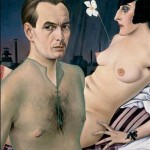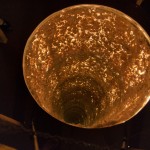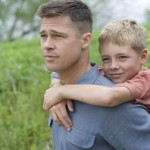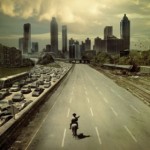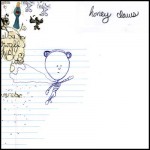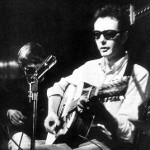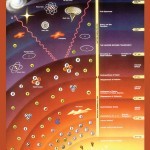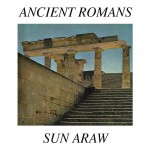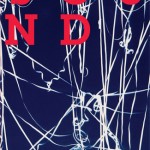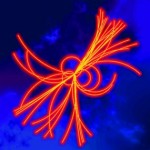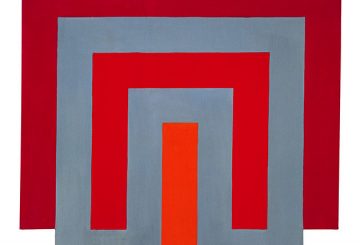Our writers round up their top ten stuff from the year; exhibitions, music, movies, books and more. Andrew Frost tries to keep the year to the one nearly over…
1. Big Museum Exhibitions
As a teenager growing up in the ‘burbs of Sydney in the mid-1970s Surrealism was my entry into modern art and I would obsessively read anything on the movement I could find, from big picture books on Dali and Magritte to obscure collections of the movement’s writings. I was a Surrealism nerd who could quote you bits out of both the first and the second Surrealist manifestos. GOMA’s Surrealism: The Poetry of Dreams was a great show because it had a lot of more obscure Surrealist art such a massive painting by the Argentine painter Roberto Matta, a selection of films shown in the gallery proper, as well as your greatest hits stuff, all contextualised into the evolution of art in Europe up to the late 1960s. That was a very good show indeed, as is the Picasso extravaganza currently on show at the Art Gallery of NSW. Of more local interest perhaps, given the trend toward museums putting on solid historical exhibitions drawn largely from Australian collections, was the NGVs Face to Face, a pretty decent survey of depictions of “the self” in art, from portraiture and sculpture to abstract painting and photography. But the show that surprised me most however was The Mad Square: Modernity in German Art 1910-37, and not only because a large proportion of the show had been sourced in Australia, but more because I took a bunch of undergrad students from the University of Technology, Sydney, with me. It was a chance to see this work through the eyes of people who had never seen it before and have the opportunity to discover just how powerful it remains. A definite highlight of the museum year.
2. ARI Show – Grand Chasm
I didn’t get to nearly enough exhibitions in artist run galleries this year but for me the standout was Kenzie Larsen, William Mansfield and Eddie Sharp’s Grand Chasm at Firstdraft. Once the viewer had entered a darkened room situated at the top of a ladder you were asked to press a button. Upon doing so, the lights went out revealing a hole in the floor that appeared to go on forever. The lights snapped back on after a minute or two revealing the mechanics of the illusion. The artists wrote of how the world is made uncanny by human intervention into the spectacle of nature but for me there was something undeniably cinematic in the experience, as though the ocular spectacle of the darkened room, point of light and corralled audience was analogous to the theatrical experience.
3. Cinema –Tree of Life
Ah yes, the cinema. I remember the cinema. Aside from an endless parade of mediocre kids films – with the honourable exception of Kung Fu Panda 2 which is a great action packed sequel that had us battling all the way home – this year’s rare cinema outing was to see what was undoubtedly the highlight of 2011 – Terrence Malick’s Tree of Life. It was a bonkers masterpiece, the kind of film no one makes anymore, not least since Andrei Tarkovsky passed on. It was a daring and mostly successful attempt to tell the story of everything in the world, from the beginning of time to now, and a hymn to a belief in God, or at least to the emergence of empathy [which was how I rationalised scenes with sad plesiosaurs]. It even had an ending so majestically naff the entire film was in danger of being totally wrecked – but was suddenly saved by the realisation that these scenes in Heaven were the fetid imaginings of one of the film’s main characters. The artistic lesson of Malick’s film is that you have to dare to be great.
4. TV – Walking Dead
A friend offered me a bunch of DVDs to watch that she had especially copied for me – rare stuff by Godard, Bresson, Ozu et al. I thanked her for her kindness but I have never got around to watching them. That’s because, although I likes me some art house as much as the next guy, what I really crave for a night-in is some zombie action. Since “TV” no longer means broadcast or even cable anymore, one of the highlights of 2011 was the series Walking Dead, likewise given to me by someone who is happy to rob artists of their rightful income. Created and directed by Frank Darabont [who was later controversially fired from the show] the series adapts a graphic novel into an incredibly graphic TV series: a cop awakes in hospital after being shot to discover the zombie apocalypse is taking place. The series, now in its second season in the US, is basic in plot but widescreen in action and brutally functional as a piece of entertainment. Unseen on screen in any [legal] form in Australia just yet, it’s due to be screened on Foxtel when they launch new channel FX sometime in 2012. Also worth mentioning is Killing Time, the David Wenham-starring series on TV1, created by Ian David [writer/director of classic Aussie crime series Blue Murder] about disgraced Melbourne barrister Andrew Fraser, a top silk who represented Lewis Moran, Alan Bond among others. After the travesty that was Underbelly: Razor – which criminally squandered one of the great true crime stories in Australian history – it was great to see an Australian crime series returning to the ugly roots of the genre.
5. Best New Song: Digital Animal
Here’s a confession: when I find a new song I like [that is, an actual short pop song] I listen to it over and over until it’s exhausted. But until then I can listen to it a hundred, five hundred, a million times. Thus the song Digital Animal by Honey Claws has been on high rotation ever since it turned up in episode 2 of season 4 of Breaking Bad. That’s my second big confession: I’m getting nearly all my new pop music tips from the soundtracks of good TV shows. [I would have mentioned Breaking Bad as one of my top picks of 2011 if doing so didn’t seem so desperately try hard]. Watching Jesse try to bury the sorrow of what he has done in the shuddering bass bin of his towering speakers was a superlative TV moment, and a tip of the hat to whoever chooses the music for the show. Listen to it here
6. Best Old Song: The Dolphins
Much like my experience of Digital Animal, this song The Dolphins by Fred Neil appeared to me during a marathon rewatching of all six seasons of The Sopranos. Ok yes, it’s another drug scene where Christopher is on the nod at a fairground in the middle of season five, but the strangeness of this song stands alone. Neil, a Greenwich Village folkie from the 1960s, had the low toned voice of a country singer, with touches of psychedelic folk rock and Birds-like solo lines, a combination that reminds this listener of Lee Hazelwood at his most acid fried, or maybe Glen Campbell riding on a lysergic rainbow to Vegas. Listen to it here.
7. Book – Gwyneth Jones –The Universe of Things
Buying genre fiction is all about following leads. After reading a short story by British SF author Gywneth Jones in The New Space Opera a couple of years ago I’d been on the hunt for more of her work. Frustratingly the books of hers that were easiest to find where from a multi-part series starting with a novel Bold As Love – but actually finding that first book anywhere was impossible. By chance, and in the closing days of Borders going-out-of-business sale, I discovered her 1985 novel Divine Endurance, a simply brilliant work of speculative fiction/fantasy that could be broadly described as “feminist SF’ but for this reader, brought up on New Wave SF of the 1970s, this is what the genre is meant to be; socially as well as scientifically speculative, narratively inventive and superbly written. If you’re wondering why I wasn’t just buying books online instead of hunting dusty shelves, you have a point. Come the arrival of my iPad, I found that most of Jones’s books weren’t available until September when a flood of her work arrived, including the latest short story collection The Universe of Things. The opening story of the collection – In The Forest of The Queen – has a strange flavour reminiscent of Haruki Murikami . You can read it as sample in the Kindle store. Just as an aside too, vintage SF publishers Gollancz have made their entire back catalogue available as ebooks via Amazon. For those of you hankering for a re-read of John Sladek‘s The Steam Driven Boy, an ultra-obscure collection of stories from the New Wave heyday, it’s yours for $5.95. Goodbye bookshops.
8. Album – Ancient Romans – Sun Araw
There’s something majestic about the side project that becomes bigger than the original band. Guitarist Cameron Stallones is a member of obscure LA psychedelic band Magic Lantern who branched out under the name Sun Araw, releasing Eps and cassette tapes of long-form, largely improvised repetitive drone music. Later albums, such as the magnificent Beach Head [2008] and heavy, heavy Heavy Deeds [2009] are great entry points for the meditative space rock that is Sun Araw. In 2011 Stallones released Ancient Romans, another journey to the outer limits of the mind, with touches of acid surf, Terry Riley-esque keyboards and everything drenched in reverb and tape echo. You may ask, is this trip really necessary? Answer, yes. Listen to a track here.
9. Book – Sound – Edited by Caleb Kelly
A new edition to the ever-expanding and now damn-near definitive Documents of Contemporary Art series from the MIT Press is Sound edited by Caleb Kelly. Kelly has edited together excerpts some of the key 20th and 21st century texts on sound, from the Futurists to John Cage, Fluxus, Alvin Lucier, Jacques Attali, Paul Virilio and further on to artists including Christian Marclay, Bruce Nauman, Mike Kelly and much more. How one defines “sound” in relation to forms and styles of music, as soundtrack, as noise, as a form of exchange and so on, is at the root of the enquiry of artists, theorists and musicians alike. Happily, there is no definition that works across all areas and Kelly’s collection of sometime contesting viewpoints provides an excellent introduction to the field.
10. Particle – Higgs Boson
As news breaks that scientists at CERN might have, maybe, finally, narrowed the search down for the [until now, perhaps] only theoretical particle called the Higgs Boson [aka The God particle] also comes the difficulty in explaining what it is to the general public. The LA Times says that “The CERN results have been eagerly anticipated by physicists hoping to find experimental support for the Standard Model of particle physics, the theory that explains how subatomic particles interact to make up the building blocks of the universe.” Ok, and the Sydney Morning Herald says “identifying the Higgs boson particle would allow scientists to explain why particles have mass – and in the process shine light on the evolution of the universe just seconds after the Big Bang. So, it’s all about mass… and how the universe got built. However, the Toronto Star says “The reason you can’t push a car … is because of the mass of the particles in the car interacting with a Higgs field.”
